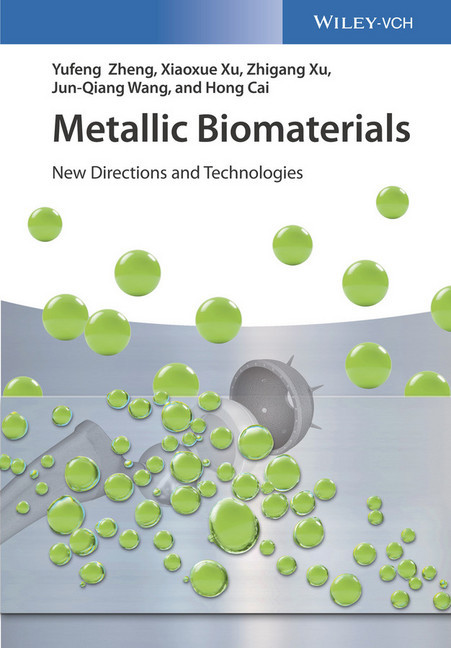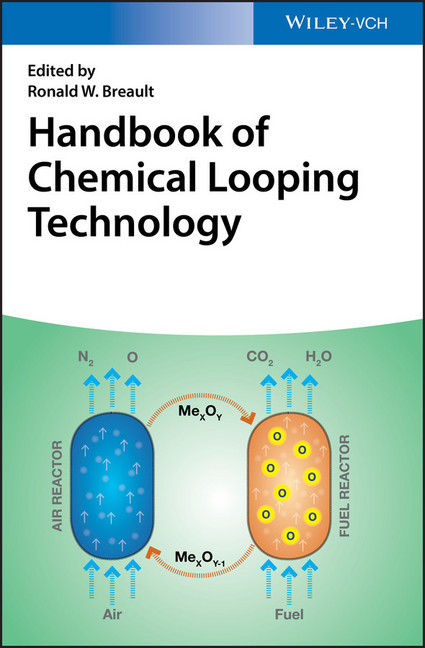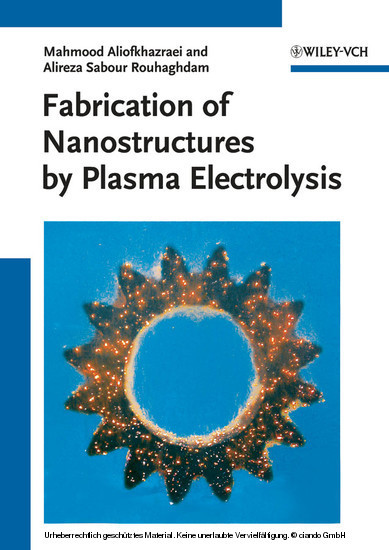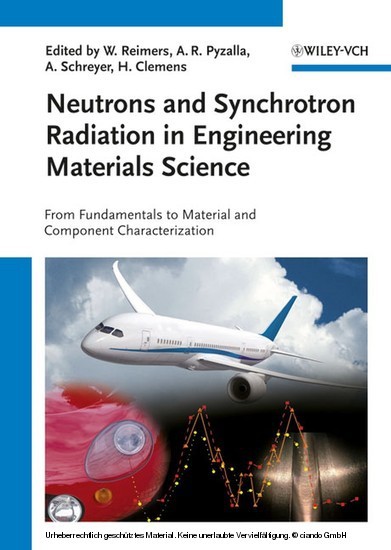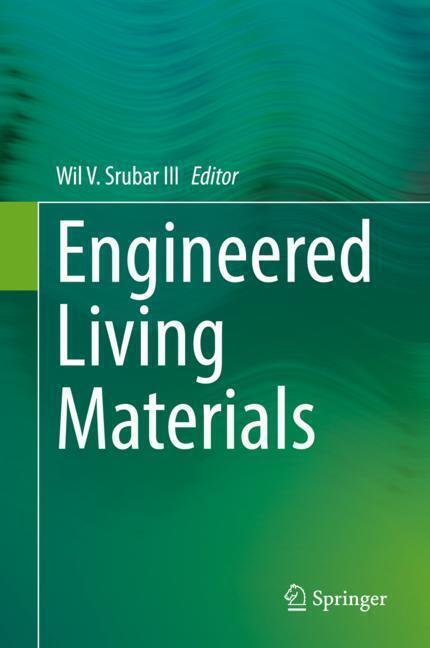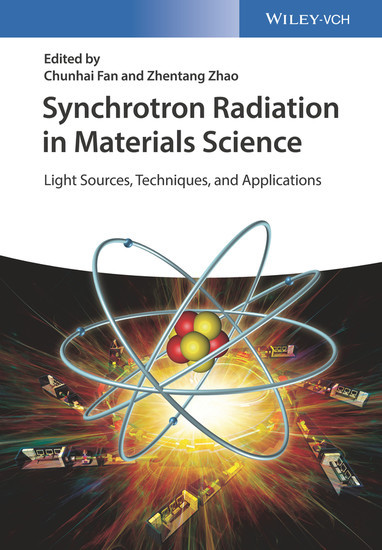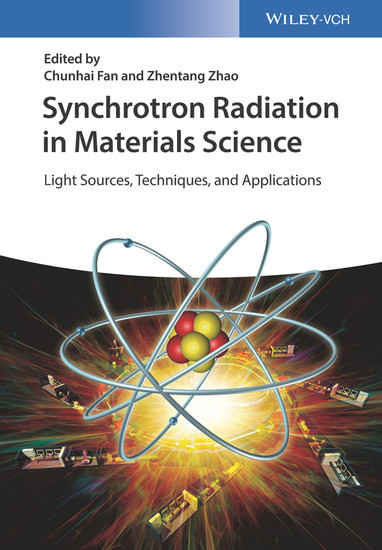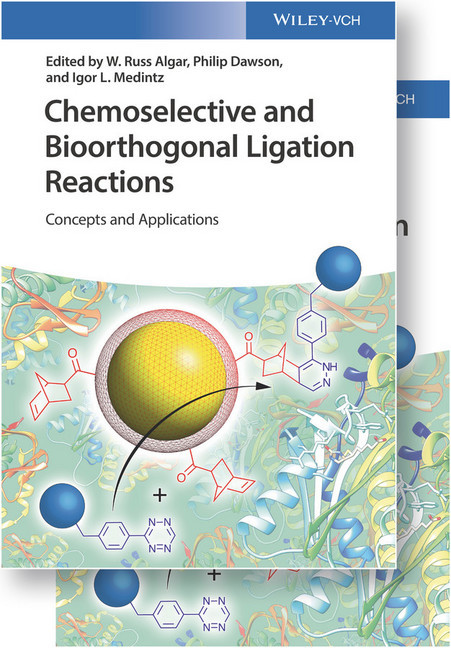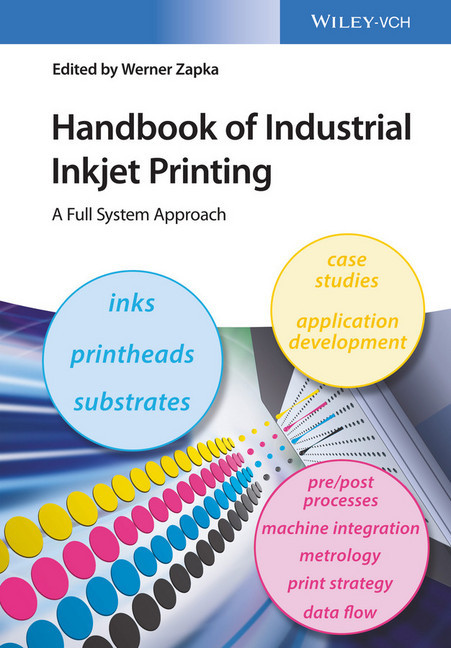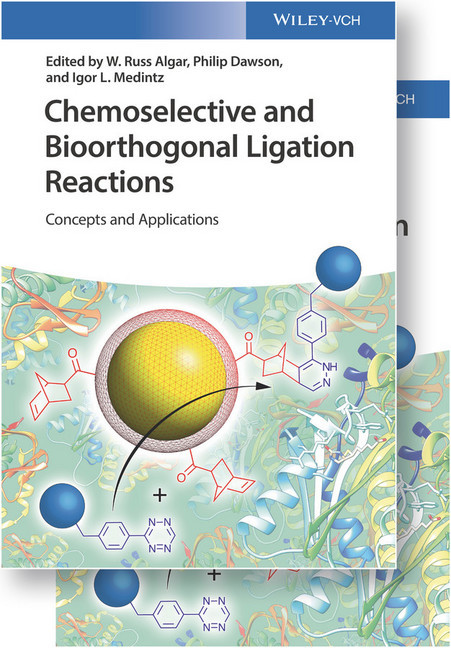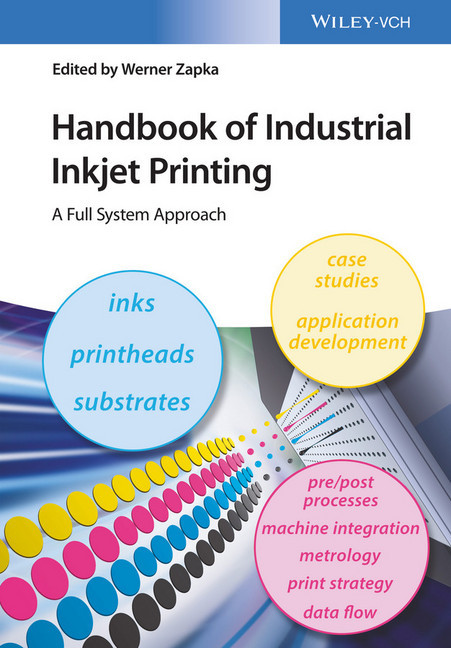Metallic Biomaterials
New Directions and Technologies
With its comprehensive coverage of recent progress in metallic biomaterials, this reference focuses on emerging materials and new biofunctions for promising applications.
The text is systematically structured, with the information organized according to different material systems, and concentrates on various advanced materials, such as anti-bacterial functionalized stainless steel, biodegradable metals with bioactivity, and novel structured metallic biomaterials. Authors from well-known academic institutes and with many years of clinical experience discuss all important aspects, including design strategies, fabrication and modification techniques, and biocompatibility.
Yufeng Zheng is Professor in the Department of Materials Science and Engineering at Peking University, China. He started his research career at Harbin Institute of Technology in China after obtained his PhD in materials science there. In 2004, he moved to Peking University and founded the Laboratory of Biomedical Materials and Devices at the College of Engineering. He was a winner of the National Science Fund for Distinguished Young Scholars in 2012. He has published over 360 scientific publications including eight books and seven book chapters.
Xiaoxue Xu is Macquarie University Research Fellow in the Department of Chemistry and Biomolecular Sciences at Macquarie University, Australia. After she received her PhD in Materials Science and Engineering from the University of Western Australia, she worked there as Research Assistant Professor in the School of Chemical and Mechanical Engineering. She joined Macquarie University in 2014 and her research is focused on nanostructured biomaterials.
Zhigang Xu is Senior Research Scientist in Department of Mechanical Engineering at North Carolina A&T State University, USA. He is also affiliated to NSF Engineering Research Center for Revolutionizing Metallic Biomaterials, USA. He received his PhD in Mechanical Engineering from North Carolina A&T State University and then continued his research there as a faculty. He leads a Mg-alloy processing research group and Mg-based alloy design and processing project.
Jun-Qiang Wang is Professor in Ningbo Institute of Materials Technology & Engineering, Chinese Academy of Sciences. He got his PhD in Condensed Matter Physics from Institute of Physics, Chinese Academy of Sciences. From 2010 to 2014 he worked as Research Associate in Tohoku University, Japan and University of Wisconsin-Madison, USA. He joined the Ningbo Institute of Materials Technology & Engineering in 2014 and was awarded the support of One Hundred Talents Program of Chinese Academy of Science. His research focused on fabrication and applications of metallic glasses.
Hong Cai is Associate Professor in Department of Orthopedics at Peking University Third Hospital, China. He worked over 10 years as Attending in orthopedics. During that time he also worked sometime as Clinical Fellow at Seoul University, Korea, University of Western Ontario, Canada and Rush University Medical Center, USA. His research interest is design and development of new implants and 3D printing in orthopedics.
The text is systematically structured, with the information organized according to different material systems, and concentrates on various advanced materials, such as anti-bacterial functionalized stainless steel, biodegradable metals with bioactivity, and novel structured metallic biomaterials. Authors from well-known academic institutes and with many years of clinical experience discuss all important aspects, including design strategies, fabrication and modification techniques, and biocompatibility.
Yufeng Zheng is Professor in the Department of Materials Science and Engineering at Peking University, China. He started his research career at Harbin Institute of Technology in China after obtained his PhD in materials science there. In 2004, he moved to Peking University and founded the Laboratory of Biomedical Materials and Devices at the College of Engineering. He was a winner of the National Science Fund for Distinguished Young Scholars in 2012. He has published over 360 scientific publications including eight books and seven book chapters.
Xiaoxue Xu is Macquarie University Research Fellow in the Department of Chemistry and Biomolecular Sciences at Macquarie University, Australia. After she received her PhD in Materials Science and Engineering from the University of Western Australia, she worked there as Research Assistant Professor in the School of Chemical and Mechanical Engineering. She joined Macquarie University in 2014 and her research is focused on nanostructured biomaterials.
Zhigang Xu is Senior Research Scientist in Department of Mechanical Engineering at North Carolina A&T State University, USA. He is also affiliated to NSF Engineering Research Center for Revolutionizing Metallic Biomaterials, USA. He received his PhD in Mechanical Engineering from North Carolina A&T State University and then continued his research there as a faculty. He leads a Mg-alloy processing research group and Mg-based alloy design and processing project.
Jun-Qiang Wang is Professor in Ningbo Institute of Materials Technology & Engineering, Chinese Academy of Sciences. He got his PhD in Condensed Matter Physics from Institute of Physics, Chinese Academy of Sciences. From 2010 to 2014 he worked as Research Associate in Tohoku University, Japan and University of Wisconsin-Madison, USA. He joined the Ningbo Institute of Materials Technology & Engineering in 2014 and was awarded the support of One Hundred Talents Program of Chinese Academy of Science. His research focused on fabrication and applications of metallic glasses.
Hong Cai is Associate Professor in Department of Orthopedics at Peking University Third Hospital, China. He worked over 10 years as Attending in orthopedics. During that time he also worked sometime as Clinical Fellow at Seoul University, Korea, University of Western Ontario, Canada and Rush University Medical Center, USA. His research interest is design and development of new implants and 3D printing in orthopedics.
1;Cover;1 2;Title Page;5 3;Copyright;6 4;Contents;7 5;Preface;13 6;About the Authors;15 7;Chapter 1 Introduction;17 7.1;1.1 Traditional Metallic Biomaterials;17 7.2;1.2 Revolutionizing Metallic Biomaterials and Their New Biofunctions;19 7.2.1;1.2.1 What are Revolutionizing Metallic Biomaterials?;19 7.2.2;1.2.2 Antibacterial Function;19 7.2.3;1.2.3 Promotion of Osteogenesis;21 7.2.4;1.2.4 Reduction of In?stent Restenosis;24 7.2.5;1.2.5 MRI Compatibility;25 7.2.6;1.2.6 Radiopacity;26 7.2.7;1.2.7 Self?Adjustment of Young's Modulus for Spinal Fixation Applications;26 7.3;1.3 Technical Consideration on Alloying Design of Revolutionizing Metallic Biomaterials;26 7.3.1;1.3.1 Evolution of Mechanical Properties with Implantation Time;26 7.3.2;1.3.2 Biocorrosion or Biodegradation Behavior and Control on Ion Release;30 7.4;1.4 Novel Process Technologies for Revolutionizing Metallic Biomaterials;32 7.4.1;1.4.1 3D Printing;33 7.4.2;1.4.2 Safety and Effectiveness of Biofunctions;33 7.4.3;1.4.3 Severe Plastic Deformation;36 7.5;References;36 8;Chapter 2 Introduction of the Biofunctions into Traditional Metallic Biomaterials;47 8.1;2.1 Antibacterial Metallic Biomaterials;47 8.1.1;2.1.1 Antibacterial Metals;47 8.1.2;2.1.2 Antibacterial Stainless Steels;49 8.1.3;2.1.3 Antibacterial Ti Alloys;53 8.1.4;2.1.4 Antibacterial Mg Alloys;55 8.1.5;2.1.5 Antibacterial Bulk Metallic Glasses;56 8.2;2.2 MRI Compatibility of Metallic Biomaterials;56 8.2.1;2.2.1 MRI Compatibility of Traditional Metallic Biomaterials;60 8.2.2;2.2.2 MRI?Compatible Zr Alloys;60 8.2.3;2.2.3 MRI?Compatible Nb Alloys;62 8.2.4;2.2.4 Other MRI?Compatible Alloys;63 8.3;2.3 Radiopacity of Metallic Biomaterials;63 8.3.1;2.3.1 Stainless Steel Stents;64 8.3.2;2.3.2 Co-Cr Stents;64 8.3.3;2.3.3 Nitinol Stents;65 8.3.4;2.3.4 Ta Stents;65 8.3.5;2.3.5 Other Metallic Stents;65 8.4;References;66 9;Chapter 3 Development of Mg-Based Degradable Metallic Biomaterials;75 9.1;3.1 Background;75 9.2;3.2 Mg-Based Alloy Design and Selection Considerations;76 9.2.1;3.2.1 Biodegradation;76 9.2.2;3.2.2 Biocompatibility;80 9.2.3;3.2.3 Considerations in Mg-Based Alloy Design;80 9.2.4;3.2.4 Methods to Improve Mechanical Property;83 9.3;3.3 State of the Art of the Mg-Based Alloy Material Research;99 9.3.1;3.3.1 Pure Mg;99 9.3.2;3.3.2 Mg-Based Alloys with Essential Elements;100 9.3.3;3.3.3 Mg-Based Alloys with High Strength;102 9.3.4;3.3.4 Mg-Based Alloys with Special Biofunctions;104 9.3.5;3.3.5 Mg-Based Alloys with Improved Corrosion Resistance;106 9.3.6;3.3.6 Mg-Based Alloys with Bioactive Surfaces;107 9.4;3.4 State of the Art of Medical Mg-Based Alloy Device Research;108 9.4.1;3.4.1 Cardiovascular Devices;108 9.4.2;3.4.2 Orthopedic Devices;110 9.5;3.5 Challenges and Opportunities for Mg-Based Biomedical Materials and Devices;113 9.6;References;114 10;Chapter 4 Development of Fe-Based Degradable Metallic Biomaterials;129 10.1;4.1 Background;129 10.2;4.2 Pure Iron;130 10.2.1;4.2.1 Mechanical Properties of Pure Iron;130 10.2.2;4.2.2 Metabolism and Toxicity of Pure Iron;130 10.2.3;4.2.3 Basic Properties of Pure Iron;134 10.2.4;4.2.4 Degradation Behavior of Pure Iron in the Physiological Environment;135 10.2.5;4.2.5 In Vitro Experiments of Pure Iron;137 10.2.6;4.2.6 In Vivo Experiments of Pure Iron;139 10.3;4.3 Iron Alloys;143 10.4;4.4 Iron-Based Composites;155 10.4.1;4.4.1 Compositing with Metals;155 10.4.2;4.4.2 Compositing with Nonmetallic Materials;157 10.4.3;4.4.3 In Vitro Biocompatibility of Iron-Based Composites;158 10.5;4.5 Surface Modification of Iron-Based Materials;160 10.5.1;4.5.1 Surface Modification for Improving Biocompatibility;160 10.5.2;4.5.2 Surface Modification for Regulating Degradation Behavior;163 10.6;4.6 New Fabrication Technologies for Iron-Based Materials;166 10.6.1;4.6.1 Electroforming;166 10.6.2;4.6.2 Equal Channel Angular Pressing;166 10.6.3;4.6.3 Metal Injection Molding;167 10.6.4;4.6.4 Cold Gas Dynamic Spraying;167 10.6.5;4.6.5 3D Printing;169 10.7;4.7 Outlook;170 10.8;References;17
Zheng, Yufeng
Xu, Zhigang
Xu, Xiaoxue
Wang, Junqiang
Cai, Hong
| ISBN | 9783527342433 |
|---|---|
| Artikelnummer | 9783527342433 |
| Medientyp | E-Book - PDF |
| Copyrightjahr | 2017 |
| Verlag | Wiley-VCH |
| Umfang | 328 Seiten |
| Sprache | Englisch |
| Kopierschutz | Adobe DRM |

